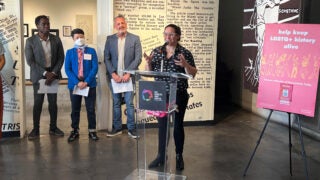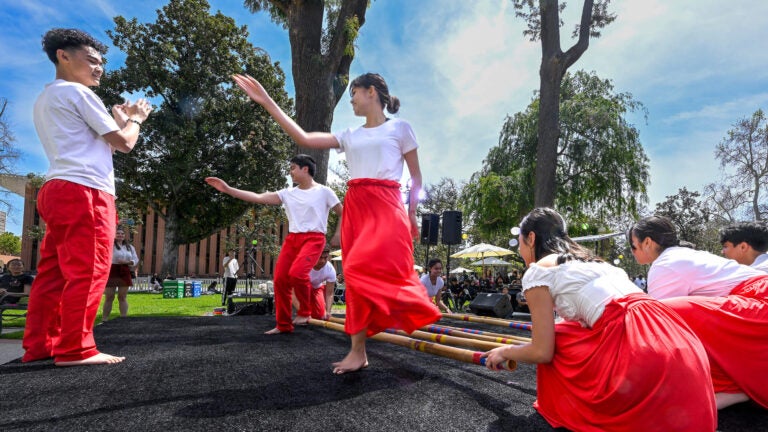
(Photo/Gus Ruelas)
Five reasons to attend USC’s cultural heritage celebrations
Food, music, dance and powerful personal stories: How the Trojan Family celebrates cultures of students, faculty and staff on campus.
Every year, USC celebrates the many cultures that make up the Trojan Family at on-campus events with food, music, dance and powerful personal stories. Here are five reasons to appreciate the meaningful, impactful work of the many students, faculty and staff whose tireless efforts make these events a reality.
To see art as resistance
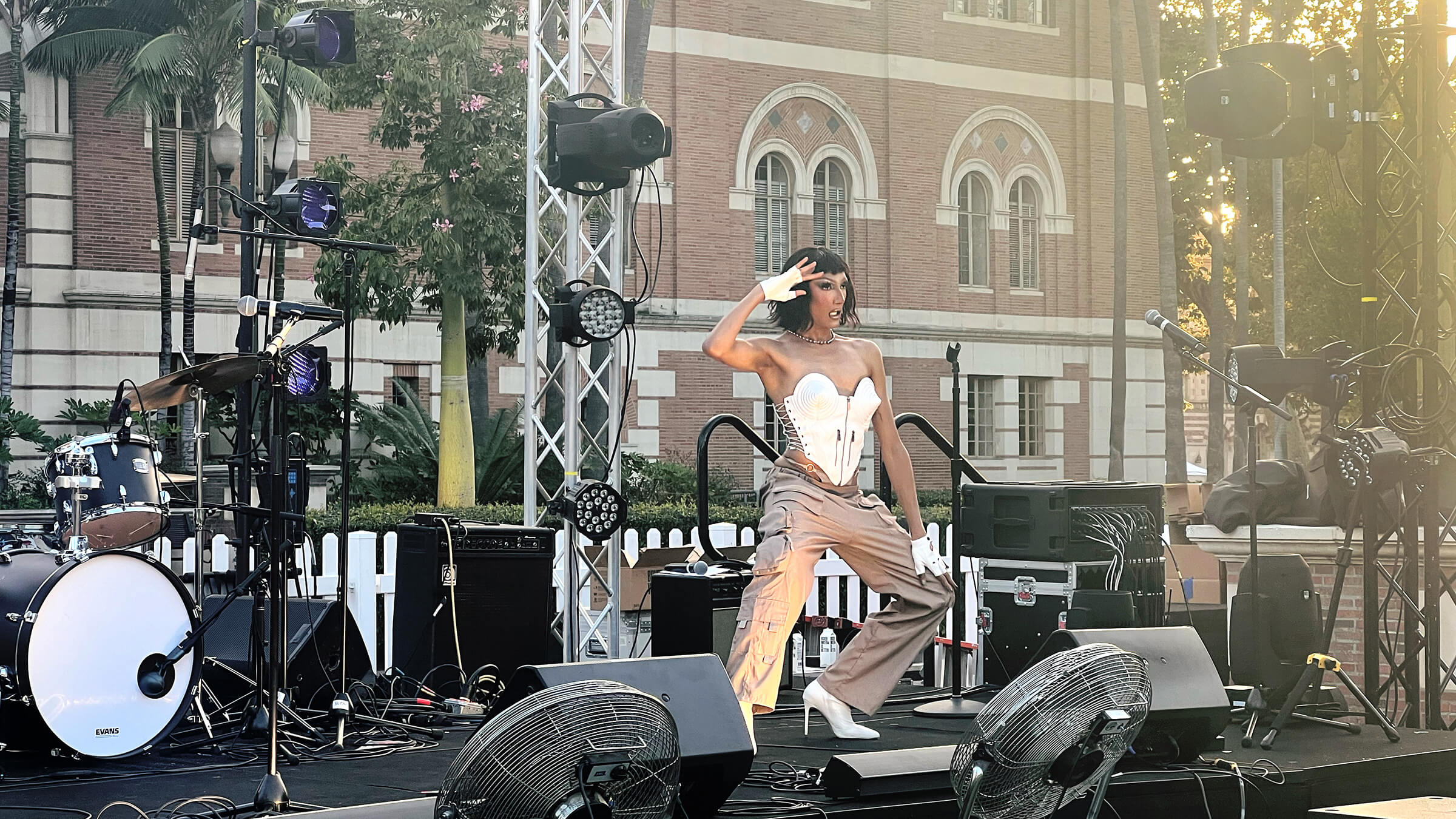
The Queer and Ally Student Assembly’s PrideFest was held in the evening for the first time this year with onstage host Rae Oblivion setting the tone for the Sept. 29 event in McCarthy Quad. Oblivion is the drag persona of Saneel Sharma, a junior at the USC Roski School of Art and Design, whose resolve to dazzle onstage was strengthened by the plethora of anti-LGBTQ+ laws — including some bans on drag performers — being proposed or passed in parts of the United States. “Instead of being afraid, I’m more angry,” they said. “That anger is fueling my drive and is making me want to express my drag more.”
Learn more about LGBTQ+ History Month.
To hear traditions in a contemporary setting
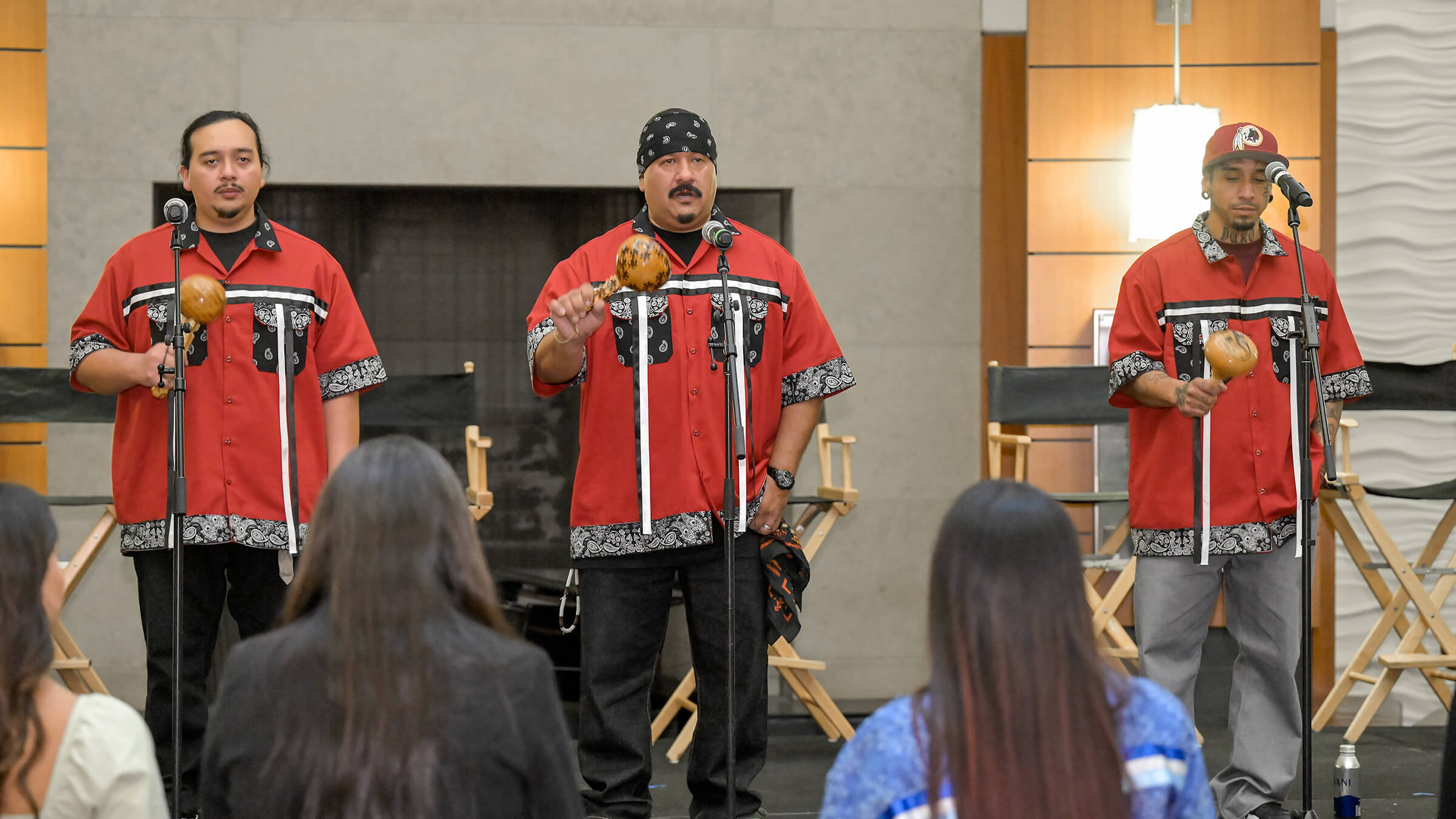
The first-ever campuswide celebration of Native American Heritage Month recognized the cultures, spiritualities and lands of Native Americans. A highlight of the Nov. 15 event was performances of a traditional form of Cahuilla music known as bird songs, which serve as an oral tradition to keep the history and spirit of both the family and the tribe alive. “These songs are the songs of our people,” Derek Duro, head singer of Torres Martinez Bird Singers, told the crowd inside the Ronald Tutor Campus Center’s Trojan Family Room. “Everything from our creation story to our migrations to where we’re at today — and they’re social songs.”
Learn more about Native American Heritage Month.
To learn about distinctive dances
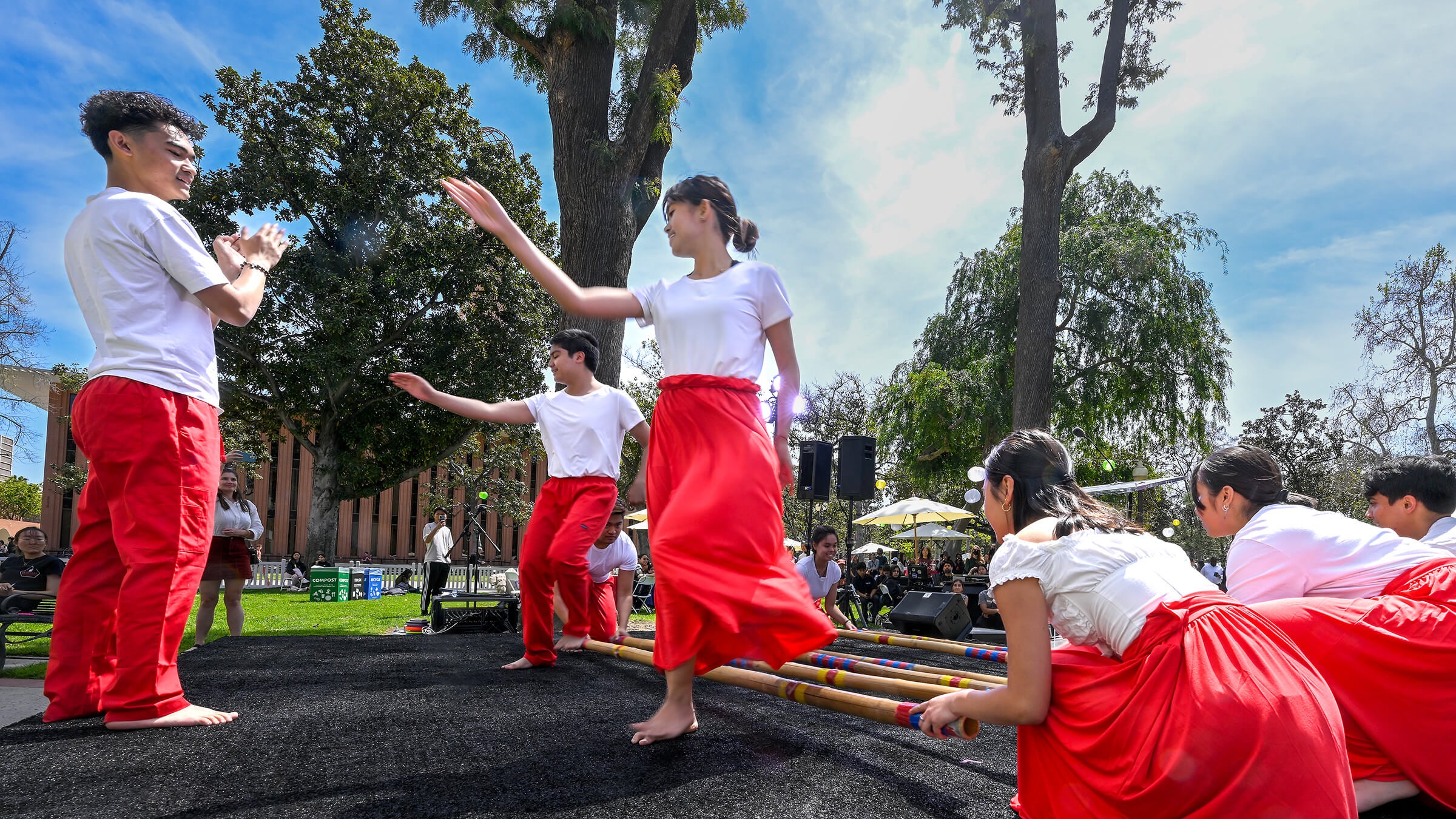
The crowd at Founders Park attending the Asian American and Pacific Islander (AAPI) Heritage Month celebration on April 6 was clearly dazzled when members of USC Troy Philippines performed a traditional Filipino folk dance known as tinikling, which involves dancing with bamboo poles. Many, like USC Viterbi School of Engineering junior Joshua Lee, had never seen anything like it before. “That was actually very cool to see,” said Lee, who is Filipino. “I’m going to ask my mom about it.”
Learn more about AAPI Heritage Month.
To build community
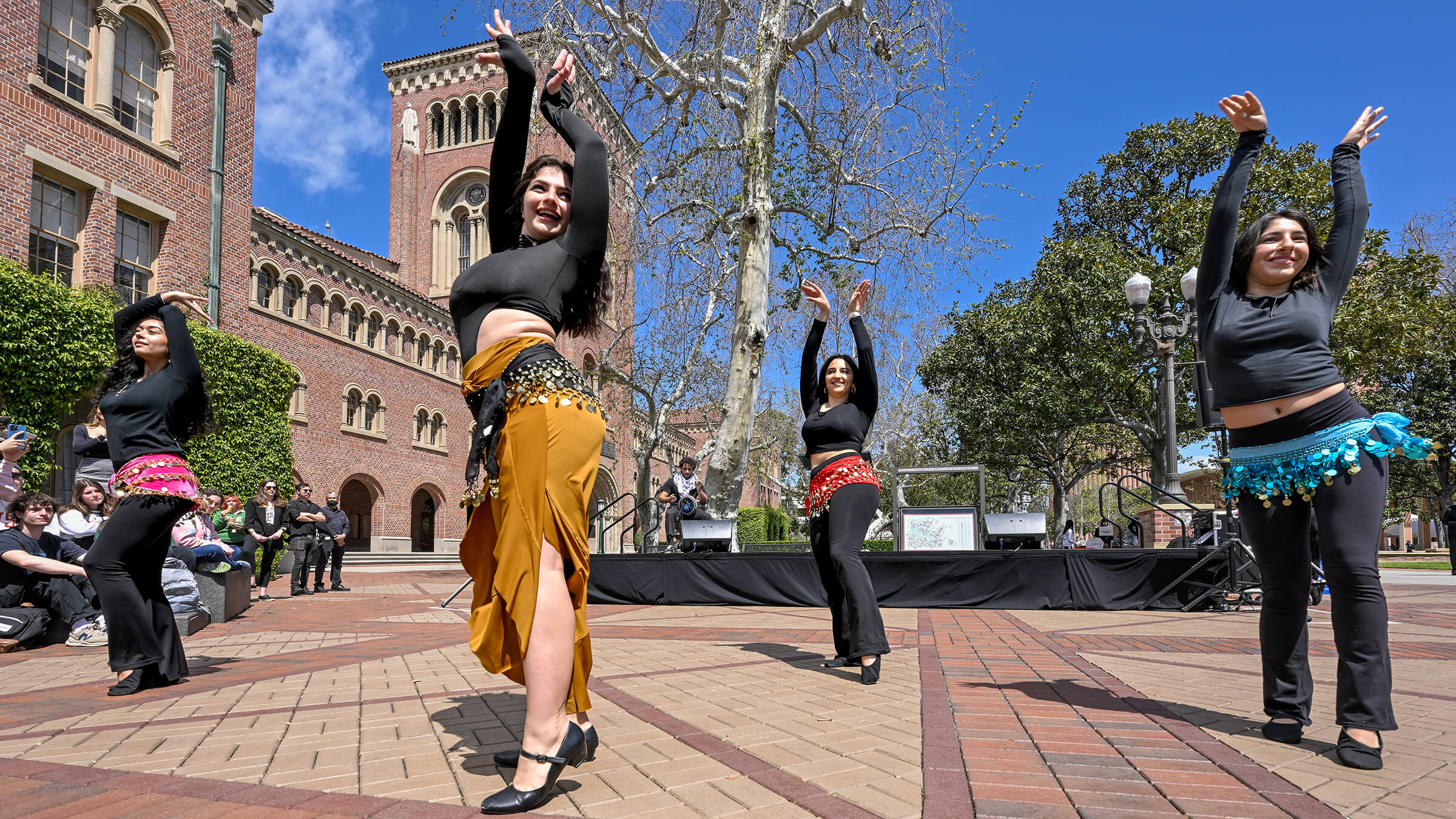
In the final moments of the Arab American Heritage Month kickoff event at Hahn Plaza on April 3, Middle Eastern North African Student Assembly co-director Nour Myra Geha took to the stage and reflected on the recent effort to create the first on-campus club for Middle Eastern and North African students and the successful push for the Undergraduate Student Government to admit the club as its own assembly. “We knew it was going to take a lot of time and a lot of hard work and a lot of effort,” Geha told the crowd of 200 people. “What we did not know is by building this up, we were going to be creating a community where real relationships are formed, where culture is shared and appreciated.”
Learn more about Arab American Heritage Month.
To foster future hopes
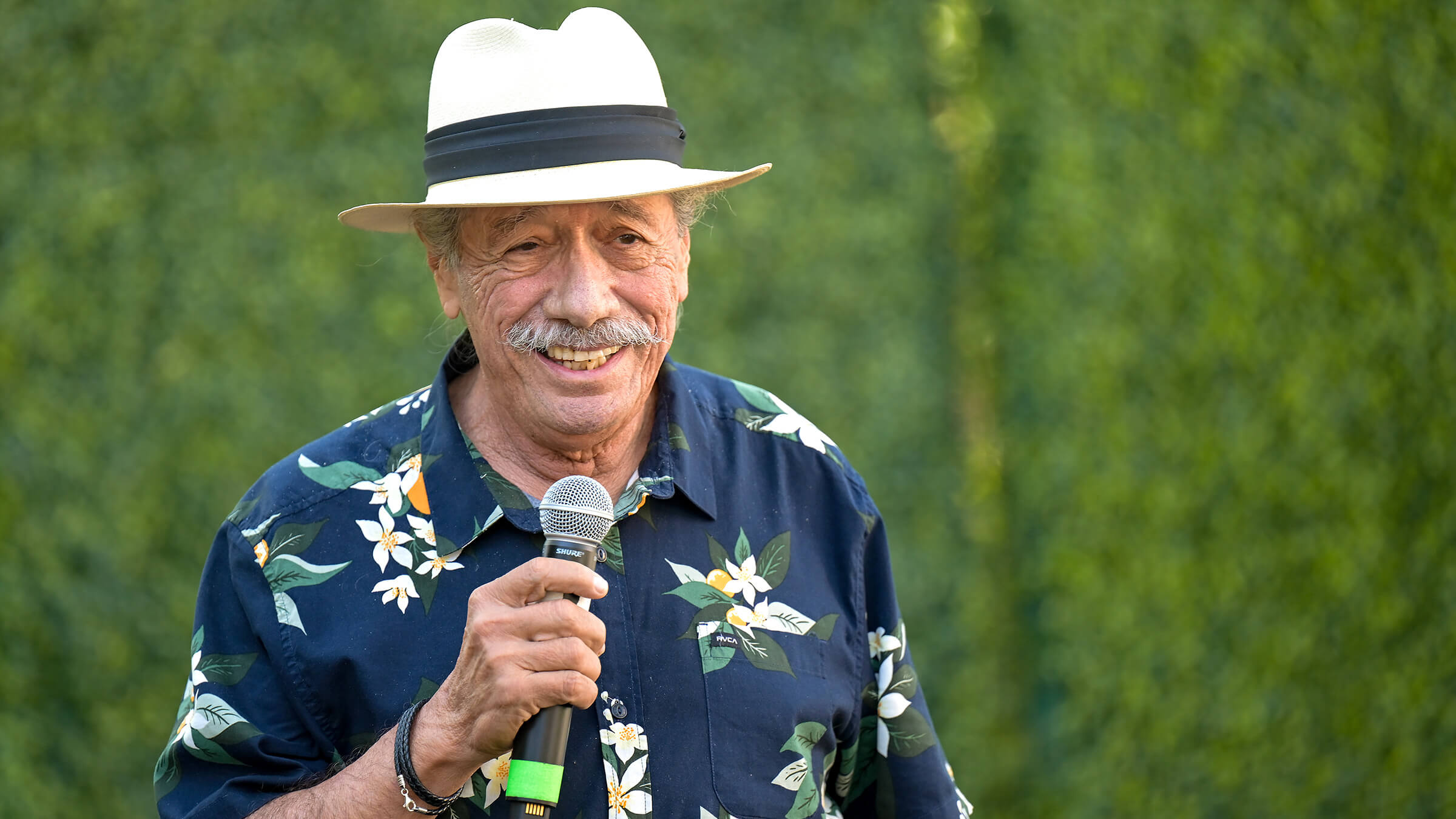
Best known for his performance in the 1988 film Stand and Deliver, Edward James Olmos shared with the large audience of students, faculty and staff at the closing event for USC’s Latinx/e Heritage Month that he has been battling throat cancer for 10 months. But he did not hesitate to accept the invitation to be the featured speaker at the Oct. 11 event with the theme of “Unidad, Prosperidad y Cultura (Unity, Prosperity and Culture).” Olmos said to the crowd: “Every single one of you guys are a breath of hope for the future, man. I’m crying because I’m happy that I can see so many faces.”
Learn more about Latinx/e Heritage Month.

